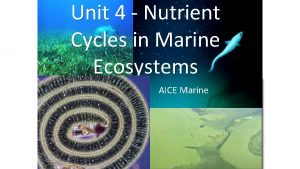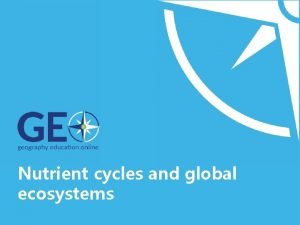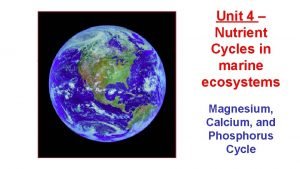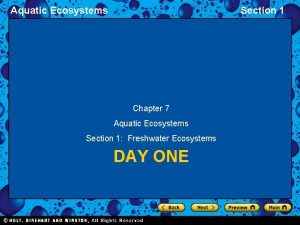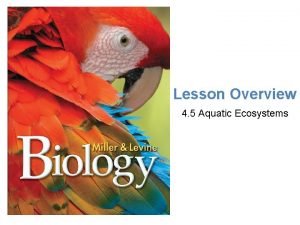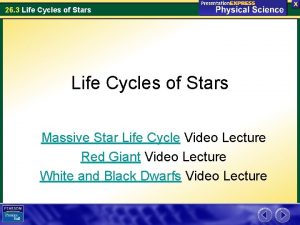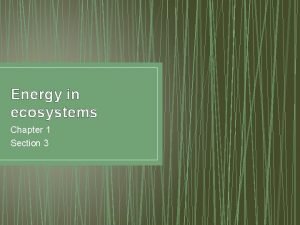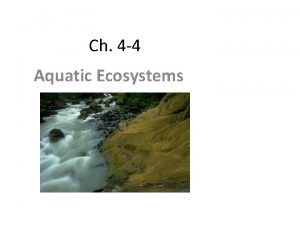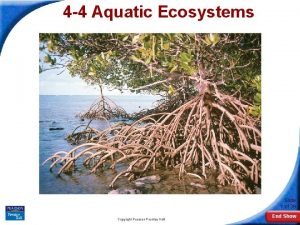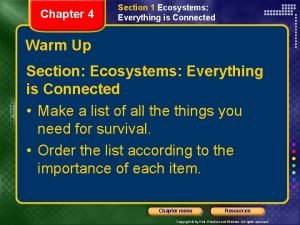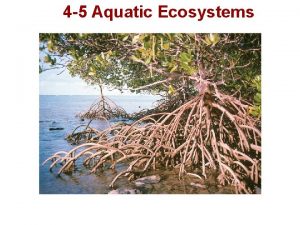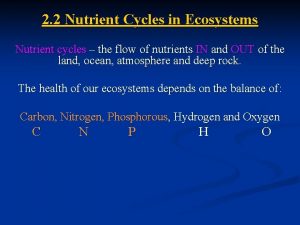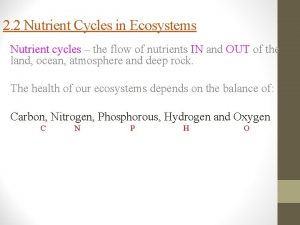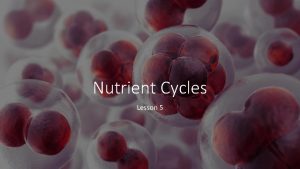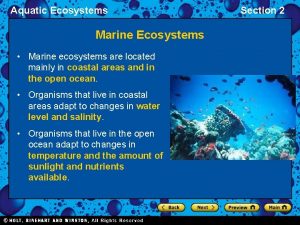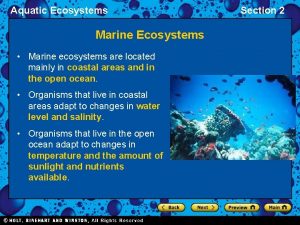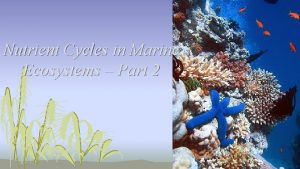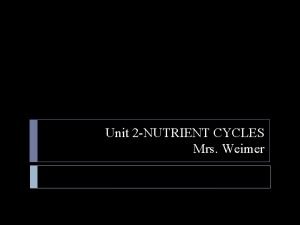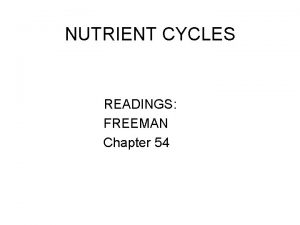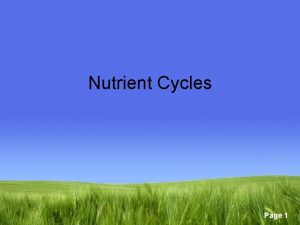Nutrient Cycles in Marine Ecosystems Part I Section













- Slides: 13

Nutrient Cycles in Marine Ecosystems Part I Section 4

Surface Layer of Ocean • Dissolved nutrients (N, *P) • Elements/compounds that are essential to life • Recall: algae require light for photosynthesis • Intensity of light as depth • Restricted to surface layer (photic zone) • Depth 30 m to 150 m • Obviously less in turbid water (high turbidity) *there due to animals releasing ammonia

What is an ion? • atom or molecule in which the total number of electrons is not equal to the total number of protons, giving the atom a net positive (+) or negative (-) electrical charge.

SOME Surface Layer Ions

Surface Ions • Those ions, together with nitrate and phosphate ions form nutrients for growth of algae and other producers • Unit of measurement: ppm • Nitrate and phosphate ions occur in low concentrations in seawater • Nitrate = 0. 5 ppm • Phosphate = 0. 07 ppm

Replenishment of dissolved nutrients (3) • 1. Upwelling – movement of water from deep in the ocean to the surface layer, where nutrients become available to primary producers

Causes of Upwelling • Deflection of deep water currents upwards • Nutrients sunk to sea floor brought back up to surface of ocean • Movement of water away from the coast by wind

2. Run-off from land • Part of hydrological cycle • Water leach nutrients (including nitrates and phosphates) from soil

3. Atmospheric Gases • CO 2 dissolved in seawater forming hydrogencarbonate ions (HCO 3 -) • AKA bicarbonate • Makes CO 2 available for fixation in photosynthesis for primary producers • *Ocean acidification • N gas is fixed by blue-green bacteria in intertidal zones • Forms nitrogen-containing organic compounds • How nitrogen enters marine ecosystems

Intertidal Zone Area above water during low tide but underwater during high tide

Nitrogen Cycle

Recycled • Nutrients like nitrates and phosphates are recycled at the ocean surface by excretion from zooplankton

Depletion of dissolved nutrients • Uptake by primary producers like phytoplankton • Synthesis of organic substances • Example: nitrate ions used for synthesis of amino acids and proteins • Phytoplankton zooplankton small fish • Proteins passed to next trophic level and so forth
 A terrestrial food web
A terrestrial food web Peptone water
Peptone water Biogeochemical cycles apes
Biogeochemical cycles apes Nutrients cycle
Nutrients cycle Biological use of magnesium in marine ecosystems
Biological use of magnesium in marine ecosystems What two locations are marine ecosystems usually located?
What two locations are marine ecosystems usually located? Photic and aphotic zones
Photic and aphotic zones Life cycle of a star assessment
Life cycle of a star assessment Aquatic areas
Aquatic areas Section 3 energy in ecosystems
Section 3 energy in ecosystems Section 4-4 aquatic ecosystems
Section 4-4 aquatic ecosystems 4-4 aquatic ecosystems answer key
4-4 aquatic ecosystems answer key Chapter 4 section 1: ecosystems: everything is connected
Chapter 4 section 1: ecosystems: everything is connected 4-4 aquatic ecosystems
4-4 aquatic ecosystems
